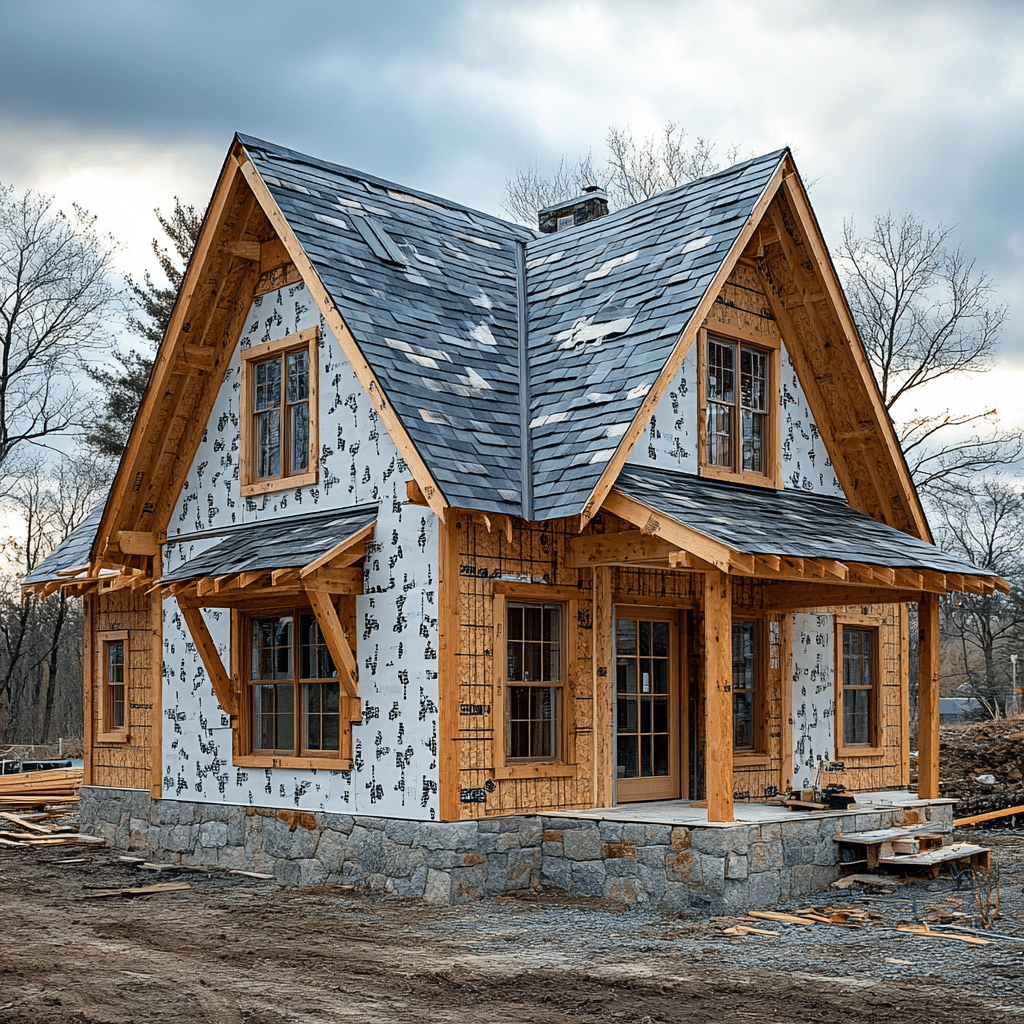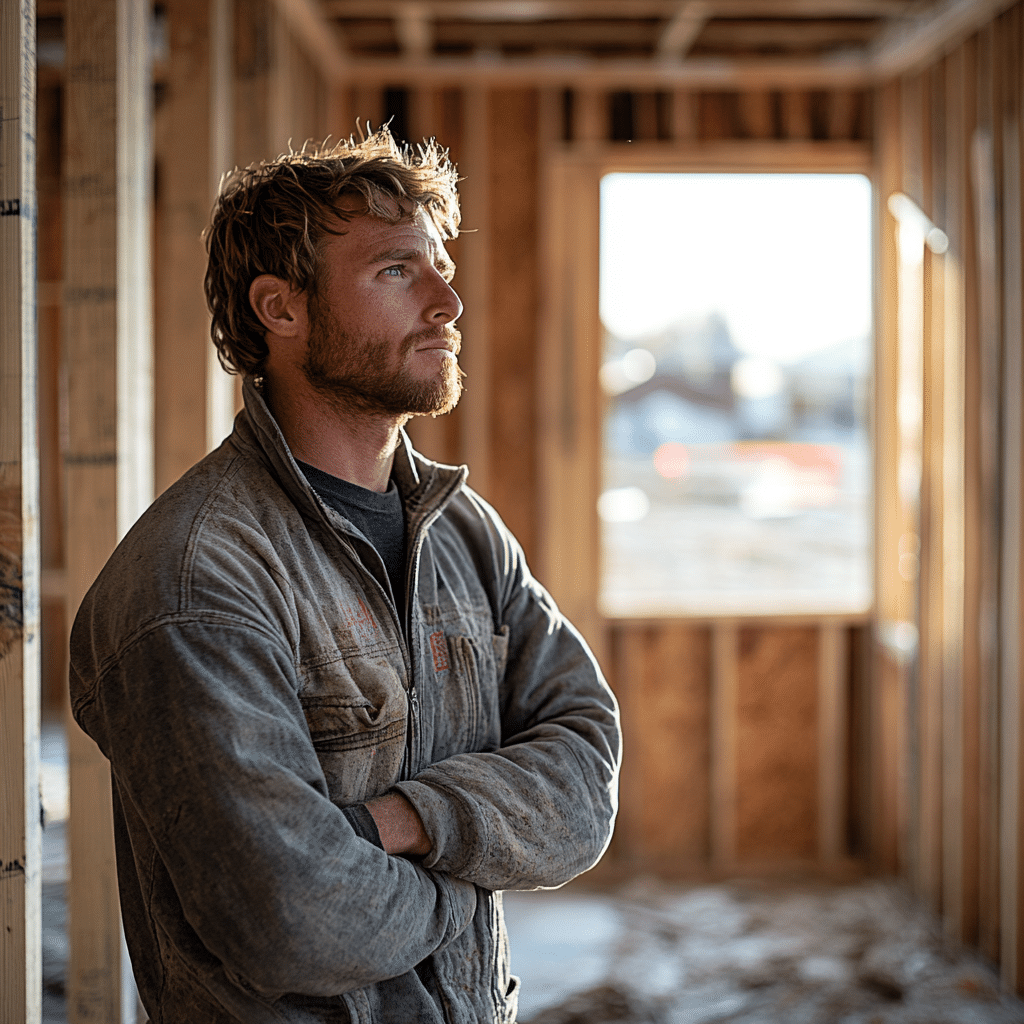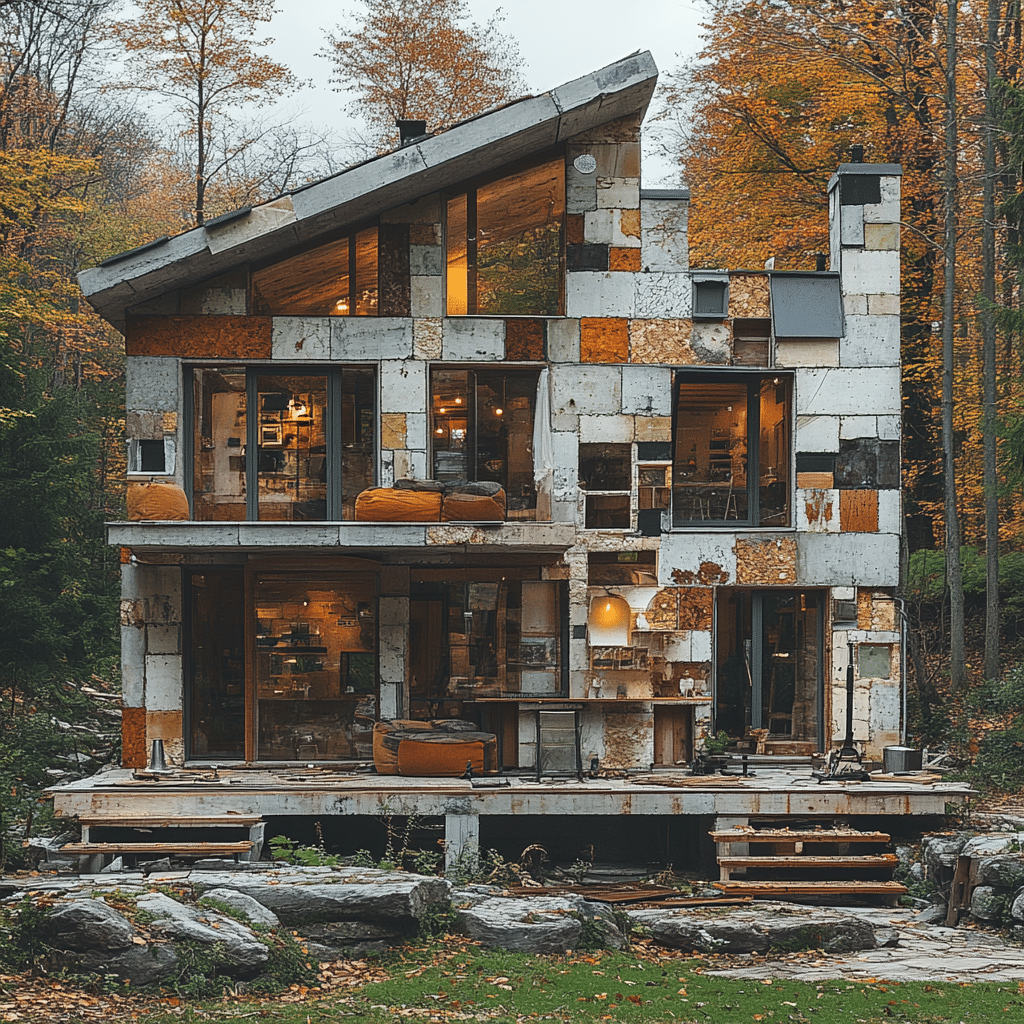Why Building a Home is Trending in 2024
In recent years, building a home has become all the rage. The trend is pretty clear: customized living solutions are incredibly attractive to modern homeowners. This interest in personalizing environments is kicking real estate norms to the curb. As sustainability becomes a driver, mixing tech advancements with the desire for unique spaces, building a home is where the action is.

Top 7 Expert Tips for Building a Home in 2024
1. Understand Your Financial Landscape
Before you even lay the first brick, you need to get a grip on your finances. Financial gurus like Dave Ramsey stress the importance of a detailed budget. You’re gonna need to factor in land costs, materials, labor, permits, and those sneaky unexpected expenses.
Tip: Use financial management apps like Mint or You Need A Budget (YNAB) to track every dime from planning to the final nail.
2. Choose the Right Location
“Location, location, location!” You’ve heard it a million times because it’s true. Take note of the neighborhood’s growth potential, upcoming developments, school quality, and access to amenities.
Insight: Zillow and Redfin provide detailed neighborhood reports and future projections, helping you make an informed choice.
3. Sustainable Building Practices
Green building practices are no longer a niche—builders like KB Home and Lennar are setting the standard. They incorporate energy-efficient methods and sustainable materials. Not only will you shrink your carbon footprint, but you’ll save a bundle on utility bills in the long run.
Analysis: According to the U.S. Green Building Council, homes built sustainably can cut energy usage by 30%. That’s a big chunk of change back in your pocket.
4. Stay Informed About Building Codes and Permits
Every locality has different building codes and permits. Miss a step, and you could be slapped with fines or find your project screeching to a halt. Work with a knowledgeable contractor to ensure you’re in compliance.
Example: Areas like Florida’s hurricane zone have strict standards. Familiarize yourself early with these mandates via local government websites.
5. Design with Future-Proofing in Mind
Sure, you know what you need now. But what about five or ten years from now? Consider smart home integrations, flexible room designs, and aging-in-place options.
Research: According to a report by the National Association of Home Builders (NAHB), homes built with future-proofing elements enjoy higher resale values and longer functional lifespans.
6. Opt for Quality Over Quantity
Building a large house might be tempting, but focusing on quality can provide better comfort and durability. Choose high-quality materials and experienced contractors to get it right.
Insight: Famed builders like Pulte Homes prioritize craftsmanship and use superior materials, resulting in homes that stand the test of time.
7. Engage in Transparent Communication
Transparent communication with your contractor and builder can make or break the project. Tools like Buildertrend offer project management solutions, helping streamline communication.
Tip: Regular site visits and meetings can help prevent misunderstandings and ensure the construction aligns with your vision.

| Aspect | Details |
| Planning & Design | – Blueprints & Architect Services – Cost: $2,000 – $8,000 – Benefits: Custom home design, efficient space planning, architectural integrity |
| Site Preparation | – Land Survey & Soil Test – Cost: $500 – $2,000 – Benefits: Ensures stable foundation, proper drainage, and adherence to local building codes |
| Foundation | – Types: Slab, Crawl Space, Basement – Cost: $4,000 – $25,000 – Benefits: Structural support, weather resistance, potential additional space |
| Framing | – Materials: Wood, Steel – Cost: $10,000 – $50,000 – Benefits: Defines the structure, supports the roof and walls |
| Roofing | – Types: Asphalt Shingles, Metal, Tile – Cost: $5,000 – $30,000 – Benefits: Protection from weather elements, long-term durability |
| Electrical & Plumbing | – Services: Wiring, HVAC, Plumbing fixtures – Cost: $10,000 – $30,000 – Benefits: Essential utilities, comfort, and compliance with safety standards |
| Insulation | – Types: Fiberglass, Spray Foam, Cellulose – Cost: $2,000 – $5,000 – Benefits: Energy efficiency, temperature control |
| Interior Finishes | – Elements: Drywall, Flooring, Paint, Lighting – Cost: $20,000 – $80,000 – Benefits: Aesthetic appeal, personalized interiors, usability |
| Exterior Finishes | – Materials: Siding, Brick, Stucco – Cost: $10,000 – $40,000 – Benefits: Curb appeal, structural protection |
| Landscaping | – Items: Grass, Trees, Shrubs, Walkways – Cost: $3,000 – $15,000 – Benefits: Enhances property value, outdoor living space |
| Permits & Inspections | – Process: Local Regulations, Periodic Inspections – Cost: $1,000 – $5,000 – Benefits: Ensures compliance with building codes, safety, and quality assurance |
| Total Average Cost | – Cost Range: $150,000 – $450,000 – Necessary Adjustments: Customization, material choices, labor rates |
| Time Frame | – Duration: 6 – 12 Months – Factors: Complexity of design, weather conditions, availability of materials |
| Financing Options | – Types: Construction Loan, Mortgage – Benefits: Allows phased funding, converts to standard mortgage upon completion |
Personalizing Your Home: Smart Choices in 2024
When it comes to customization, integrating smart technologies is the way to go. Brands like Nest and ecobee offer advanced thermostat systems, while Philips Hue presents versatile lighting options. These gizmos not only boost convenience but also conserve energy, which is great for your pocket and the planet.
Financing Your Dream Home
Home-building finances can indeed be complicated. Lenders specialized in construction loans—like Quicken Loans and Wells Fargo—can make this dream more achievable. Knowing the terms, interest rates, and payment plans helps you pick the right financing.
Calculate Your Mortgage: Utilize a loan calculator mortgage to see how different options fit your budget.
The Role of an Architect in Modern Home Building
An architect’s expertise can translate your dream into blueprints. Notable architects like Frank Gehry and Jeanne Gang blend aesthetics with utility. Bringing an architect in early can lay the groundwork for a cohesive and practical design.
Innovative Wrap-Up: The Road Ahead in Home Building
Building a home in 2024 is an exciting yet complex journey. Harness financial insights, sustainable methods, future-proof designs, and open lines of communication to steer the process smoothly. As you embark on this adventure, keep in mind that careful planning and embracing innovation will turn your dream into a sturdy and beautiful reality. Whether adopting smart home tech or sustainable practices, your dream home is within reach using these expert strategies.
With the guidance provided here, you’re well on your way. Let’s make your home-building journey not just a dream, but a triumph. Visit Mortgage Rater to explore more on how you can finance and build your ideal home.
Fun Trivia and Interesting Facts About Building a Home
Building Costs Uncovered
Ever wondered, How much Does it cost To build a house? Surprisingly, the price tag can vary dramatically based on location, materials, and the desired design. In recent surveys, building costs can range anywhere from $150,000 to over $500,000. But these figures aren’t just numbers; they represent dreams evolving brick by brick. As investments in the property market are shifting, many homebuilders find constructing a new house among the good Investments right now.
Unexpected Origins of Common Home Features
It’s easy to take modern amenities for granted, but each one has a unique story. Did you know the concept of a blind box, those mystery boxes filled with random items, has roots in architectural designs where certain features were hidden until the final reveal? Much like setting up a home, opening a blind box( brings a mix of excitement and surprise.
Building on Budget and Community
While building a home can be pricey, spending smartly is crucial. Take the community aspect as an example. In areas like the bustling neighborhoods around Baltimore, “friends and family” can be invaluable resources. The Friends And family Baltimore network demonstrates how community support can shape not just lives but homes.
Historical Tidbits
Interestingly, early designs often drew inspiration from unexpected places. Did you know that some architectural styles have parallels with popular sports strategies? For instance, Granada CF’s defensive formations have been compared to the foundational stability required in home-building. The analogy might seem quirky, yet analyzing the Granada CF Vs Athletic bilbao Stats reveals how structured planning is integral to both fields.
Building a home goes beyond bricks and mortar; it’s a journey filled with intriguing histories, strategic investments, and community bonds. Each fact enhances the charm of creating a personal sanctuary, demonstrating that home-building is as fascinating as it is rewarding.




